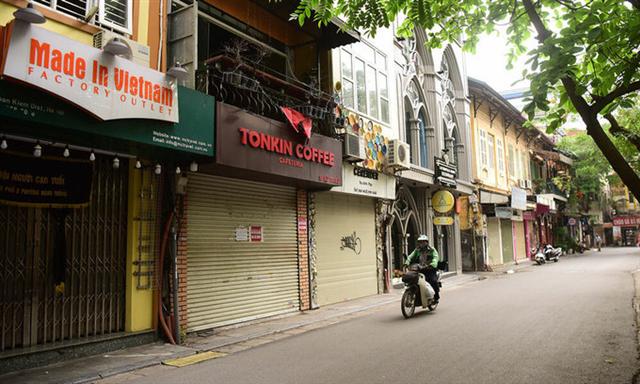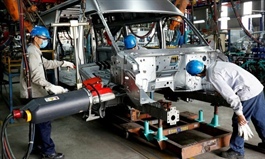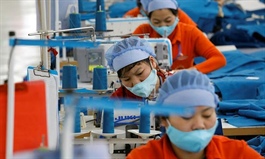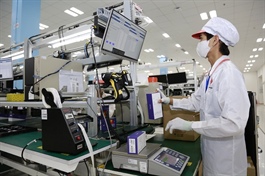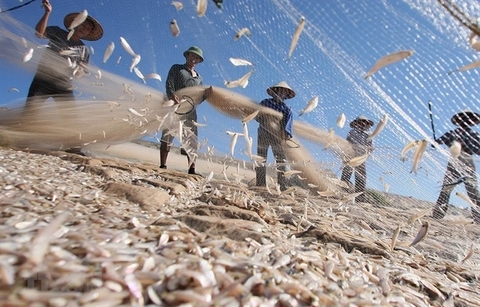Government's 2016-20 term: Against all the odds
Government's 2016-20 term: Against all the odds
The environmental crisis caused by Formosa Ha Tinh, Covid-19 and mounting national debt were some of the issues the government faced during its just ended five-year term.
A motorbike driver rides past closed shops in Hanoi on March 26, 2020 amid the coronavirus pandemic. Photo by VnExpress/Giang Huy.
|
The first year of a term usually sets the tone for the entire tenure, and the government began the 14th term in a challenging situation.
GDP growth in 2016 was only 6.21 percent against the targeted 6.7 percent, exports too fell short of the 10 percent growth target and public debt had increased to 53.2 percent of GDP, prompting the government to ask the National Assembly to raise the debt ceiling for the 2016-20 period.
The house obliged, increasing it to 54 percent.
The sluggish growth was attributed to several factors like the decline of the mining industry and agriculture being hit by natural disasters and a slump in global commodity prices.
There was a case of environmental pollution that causing fisheries output to decline by an eye-watering 20 percent.
In 2016, one of the biggest environmental disasters to hit Vietnam was caused by a unit of a Taiwanese conglomerate leaking toxic waste into the sea.
Within weeks, more than 200 km (125 miles) of coast had been sullied by the accidental release of chemicals including cyanide, phenols and iron hydroxide.
More than 40,000 jobs were directly affected in four provinces dependent on fishing and tourism. Across the country, a quarter of a million workers felt the impact, according to the Ministry of Labor, Invalids, and Social Affairs.
Role of the private sector
But the next three years were another story, especially with respect to growth. The second year saw the economy grow by 6.81 percent, exceeding the target set by the NA.
In 2018 and 2019, the rate surpassed 7 percent for the first time in a decade. Export growth was also high as the trade balance moved into positive territory, and inflation was below 4 percent.
Public debt decreased from about 64.5 percent of GDP at the beginning of the term to 55.3 percent. The debt structure was changed to make it more sustainable and safe.
Before becoming a bright spot in the economy, the private sector used to be a concern for economists. In a 2016 interview Tran Dinh Thien, former director of the Vietnam Institute of Economics, said: "The private sector, even if it is considered ‘primitive,’ contributes 60-70 percent of economic growth.
"A typically strong private sector will have the lion's share of 80-90 percent. In Vietnam, the rate is a mere 8 percent even after 30 years of successful transformation toward a free market."
In 2017, for the first time the Communist Party Central Comittee issued a resolution solely on the private sector, Resolution 10, titled ‘Develop the private economic sector into an important driver of a socialist-oriented market economy.’
Under the resolutions, policies for the sector such as relaxed regulations and supportive policies for startups, minimized administrative procedures and licensing, and e-governance have been mapped out.
As a result, the private sector began to grow rapidly. Analysts believe the private economy has become the key growth driver in the medium period.
The most apparent indicator is the record number of newly established businesses every year. In the first four years of the government’s term more than 500,000 were set up.
The handling of foreign affairs was also a highlight, both on the economic and diplomatic fronts. In early 2016, former U.S. president Barack Obama paid a visit to Vietnam. In 2019, Vietnam was the venue for the U.S.-North Korea Summit and the memorable meeting between former U.S. President Donald Trump and North Korean leader Kim Jong-un.
In early 2019 , Vietnam became the seventh country to ratify the Comprehensive and Progressive Agreement for Trans-Pacific Partnership (CPTPP). The trade deal had 11 founding members, Australia, Brunei, Canada, Chile, Japan, Malaysia, Mexico, Singapore, New Zealand, Peru, and Vietnam.
In June 2019, Vietnam and the EU signed a free trade agreement (EVFTA) and an investment protection agreement (IPA) in Hanoi after nine years of negotiations.
Rampant Covid-19
Considering the successes of 2016-19 the government and analysts expected 2020 to be a promising year. But then came Covid-19 and pushed the targets for the five years hopelessly out of reach.
The pandemic dragged Vietnam's 2016-20 average economy down to around 5.9 percent, the lowest rate in a long time, and as against a target of 6.5-7 percent.
However, Vietnam’s was one of the few economies in the world not to shrink in 2020 thanks to its successful fight against the pandemic.
Besides the achievements, which Prime Minister Nguyen Xuan Phuc described as a ship's thrilling journey through storms, the economic development is still hindered by bottlenecks.
The economy depends largely on manufacturing for growth, but the sector is dominated by foreign enterprises. They also dominate imports and exports, meaning they determine the balance of trade.
Chief Economist from the Vietnam Institute for Economic and Policy Research (VEPR) Pham The Anh said in recent years growth has depended a great deal on the use of bank credit. The annual credit growth rate (12-14 percent) is more than double the GDP growth rate, which indicates inflation and asset price bubble risks.
Revenues from foreign-invested enterprises are also low due to tax and other incentives, shifting the pressure to domestic businesses.
Public investment was the savior of the economy in 2020. But in previous years public projects were not too efficient.
The performance of state-owned enterprises and a new growth model are also topics the new government needs to focus on, he added.


